Many holidaymakers want to go swimming, snorkeling or diving on holiday in Egypt and are wondering which shark species are native to the Red Sea. Divers and snorkelers in particular consciously go in search of the large predatory fish. Occasionally you even hear about shark attacks on people between Hurghada, Safaga, El Quseir and Marsa Alam or near Sharm El Sheikh in the Sinai, in which holidaymakers are injured or even killed. So is there a danger to people? How many shark attacks are there in Egypt? We clarify which sea animal in the Red Sea is really very dangerous - not the shark, that much can be revealed in advance.
The bathing fun on holiday in Egypt could hardly be bigger. In the land of the pharaohs there is guaranteed sunshine on well over 300 days a year. And the sea always has very relaxed temperatures, well over 30 degrees, which are ideal for bathing, swimming and snorkeling. You should definitely pack your diving mask because the wildlife in the Red Sea is incredibly diverse.
But many holidaymakers also ask themselves the question: Can I just go into the water, swim and relax without any worries? Snorkeling in the Red Sea or maybe sharks will come? What's floating around underneath me? How shark species in the Red Sea in Egypt even exist?
Many myths about the sharks in Egypt
Unfortunately, there are many unpleasant myths spread about large predatory fish that are simply not true. On the other hand, it must be said that in recent years the number of serious cases has increased Shark attacks pile up. The absolute total number of attacks in the Red Sea between Hurghada, Makadi Bay, Safaga, El Quseir and Marsa Alam or at Sharm El Sheikh However, it is so low that the probability of being attacked by a shark in the Red Sea is extremely low. On average, there are perhaps one to three attacks per year - with millions of bathers going into the water at the same time.
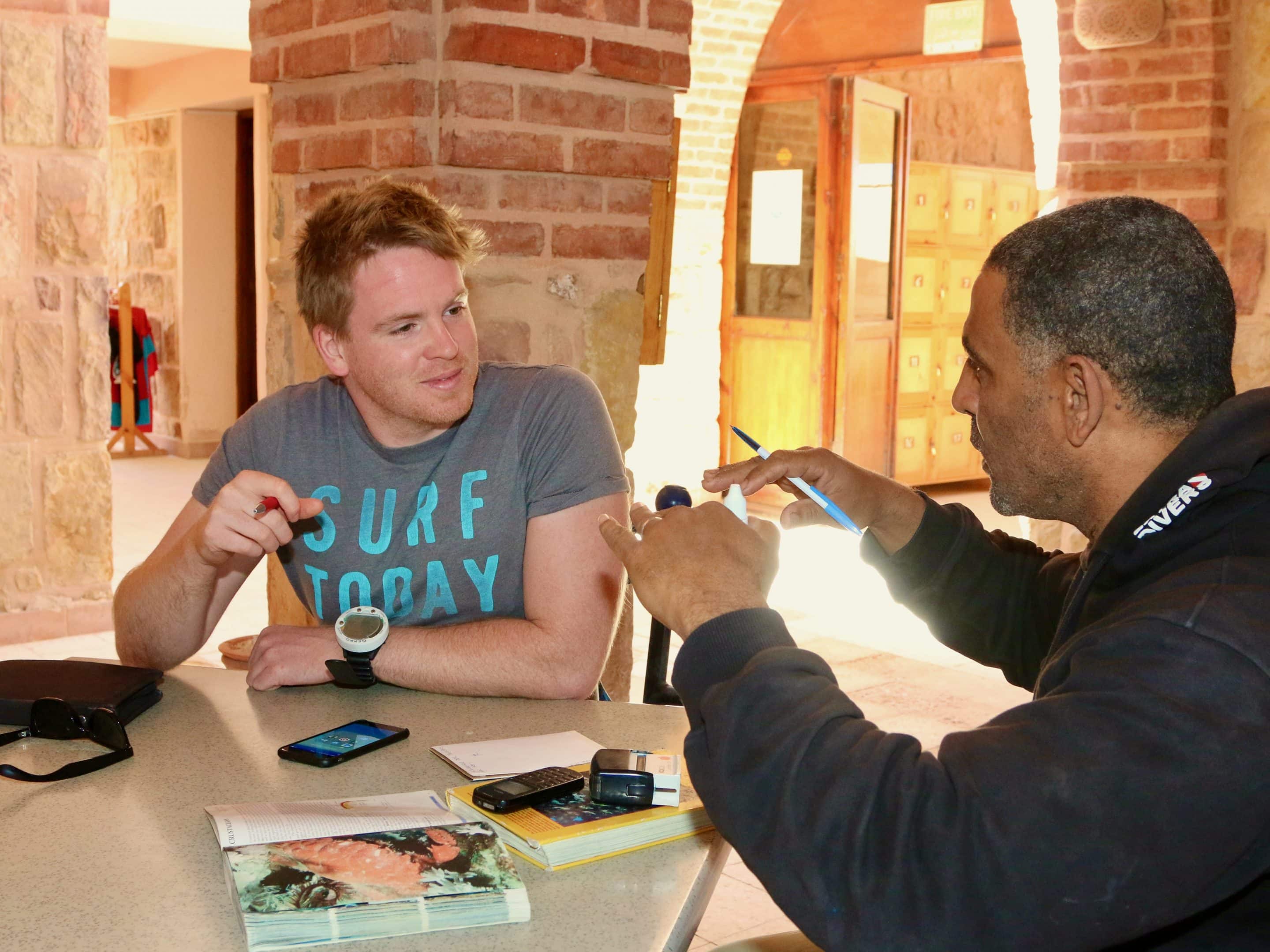
Serious shark accidents are very rare
Serious accidents involving sharks in the Red Sea are very rare. But every now and then it actually happens: When I wrote for this in March 2015 DIVING magazine in Egypt To do a report, a swimmer was killed by a shark just a few kilometers away near Marsa Alam - just a few meters from the safe shore. Back then, I reported live on location for the magazine. So it certainly happens that people in Egypt attacked by sharks, injured or killed.
What you should know about Egypt
My travel reports & blog posts about the land of the pharaohs
Blog| Travelogue | points of interest & sights | Most beautiful regions | Hotels | the quseir | Makadi Bay | Marsa Alam | Safaga | Sharm El Sheikh | Soma Bay | Jog | Diving | snorkeling | animals | turtles | Hedge | Dolphins | manatees
Video – Diving with sharks in the Red Sea in Egypt
Below I have selected a video that gives some impressions of the large pelagic sharks in the Red Sea. Unfortunately, as a beach vacationer or snorkeler, you will never encounter these - you have to go diving to one of the outer reefs like Elphinstone or the Brother Islands.
Over 40 shark species in the Red Sea in Egypt
A quick overview
More than 40 different species of sharks live in the Red Sea in Egypt. The most common sharks found in the Red Sea are the reef sharks, which sometimes stay in relatively shallow waters on coral reefs. They are one of the harmless, smaller species that don't have to swim and sometimes just lie in a cave on the reef. They can be admired by divers and snorkelers on some reefs in the Red Sea.
This group includes the Blacktip reef shark, Whitetip reef shark and the Gray reef shark. These sharks are usually very shy and harmless to humans as long as you stay calm and don't get too close to them. If you see one while diving or snorkeling, you can be really happy - because unfortunately they are becoming increasingly rare.
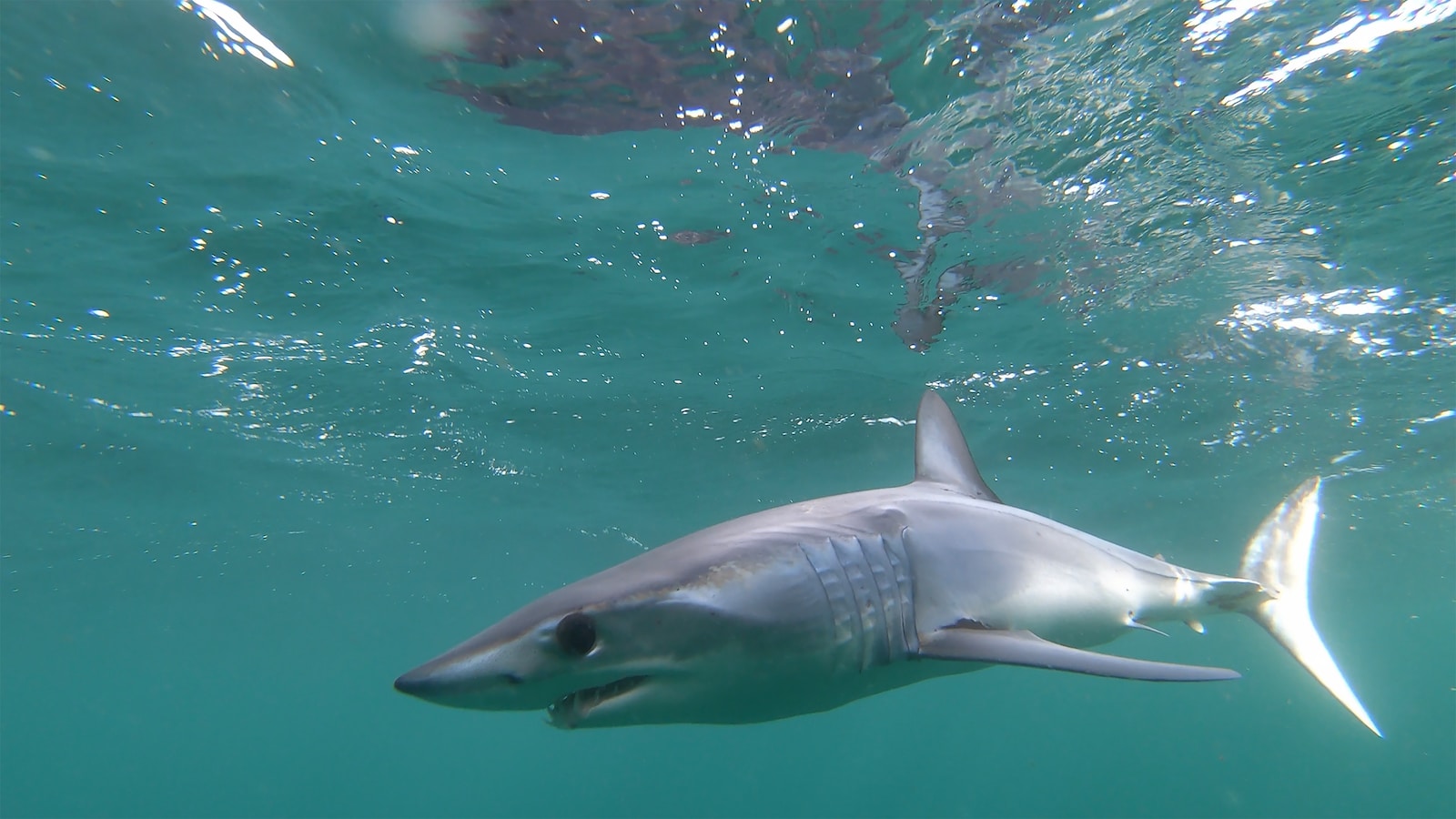
The blacktip reef shark can be identified by its light gray body with black fin tips, while the whitetip reef shark has a narrower and darker body with white fin tips. The gray reef shark, on the other hand, is slightly larger and stockier than the other two and is gray in color with a white belly.
Large, pelagic species on the outer reefs
In addition to the reef sharks, there are also several species of in the Red Sea ocean sharks, which mainly reside in deeper and open waters. As a diver, I even travel to Egypt specifically to be able to see these sharks on the Brother Islands, Daedalus Reef or Elphinstone near Marsa Alam. These include the Oceanic blacktip shark and the Oceanic Whitetip Shark (also called Longimanus). These sharks are more curious and braver than the reef sharks and can approach divers or snorkelers to inspect them.
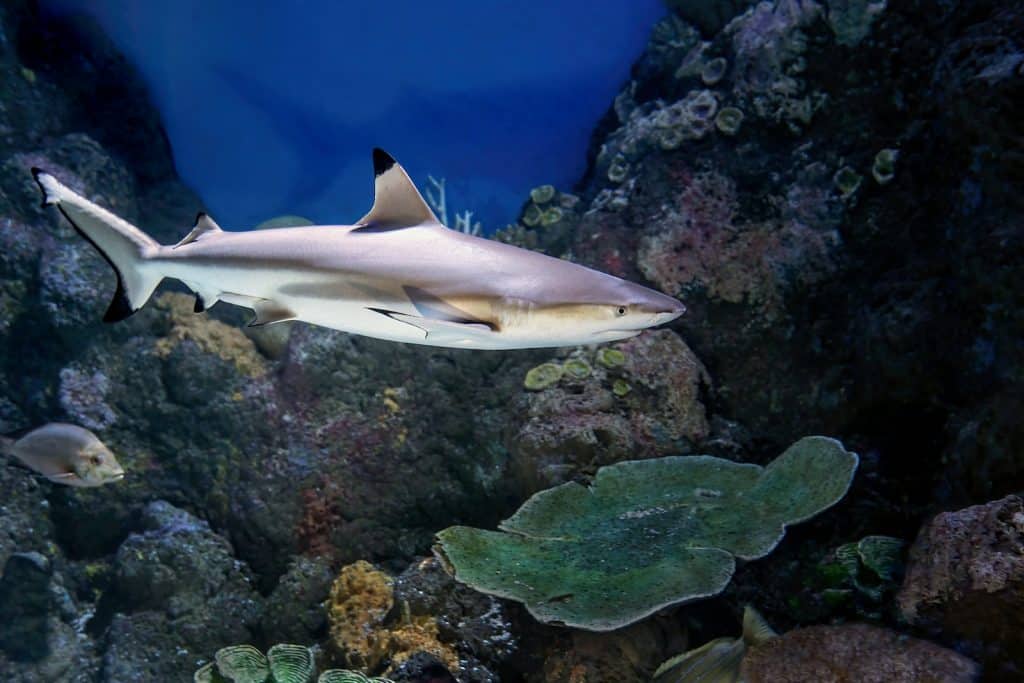
The oceanic blacktip shark can be identified by its slender body with a black band on the dorsal fin, while the oceanic whitetip shark has a more powerful body with long pointed fins. Both species can grow up to three meters long.
Many other shark species in the Red Sea
But that's not enough. You can find many other shark species in the Red Sea. Other species that can be seen in Egypt include the Hammerhead, Silberspitzenhai, Whale Shark, sand tiger shark, Bull, thresher shark, Tiger Shark, Silky, Sicklefin lemon shark, Black shark and the Mako shark. These sharks are less common and can often only be seen on special liveaboards. They have different characteristics, sizes and behaviors that make them exciting encounters for experienced divers.
It all sounds like the waters of the Red Sea in Egypt are full of sharks and you can see them all underwater. But this is not the case. On the contrary: I can count my shark encounters on one hand - and I'm really passionate about seeing and diving with sharks.
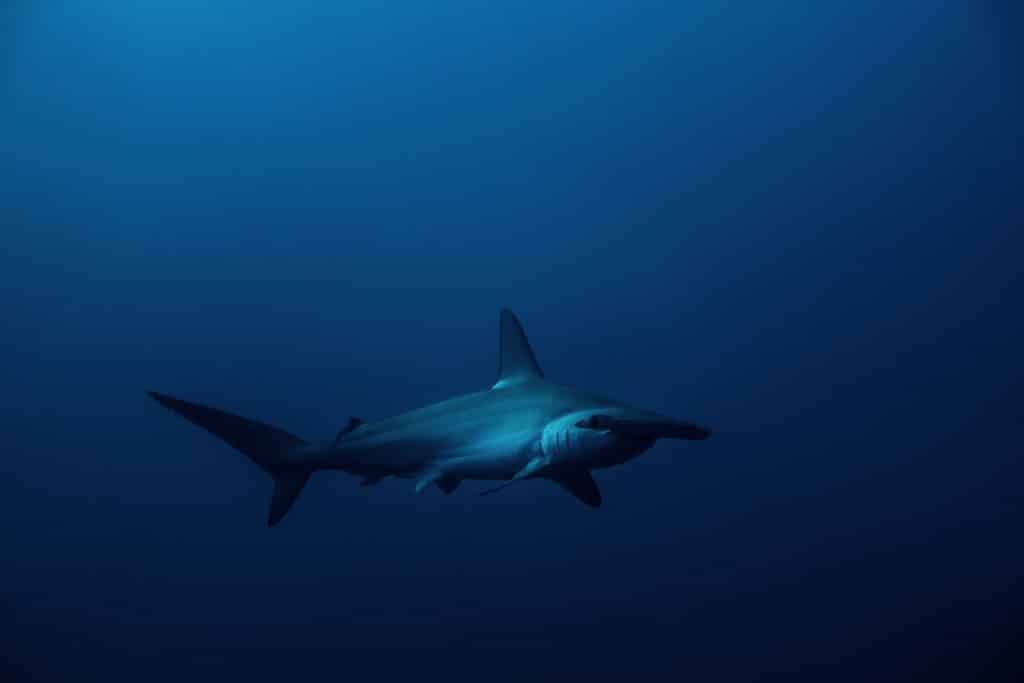
Humans are to blame for shark attacks
Shark attacks in the Red Sea in Egypt are extremely rare. But they happen. And they tend to occur more frequently than before. People are often to blame - for example, because Hotels and ships dump leftover food into the sea and attract animals. Overfishing is also to blame because the animals can no longer find enough food, come closer to the shore and become aggressive. And of course climate change, which is destroying reefs and making the water significantly warmer. The phenomenon can be observed worldwide.
But that doesn't mean you have to avoid the Red Sea. Normally you can bathe, swim, snorkel and dive in the sea without any worries. Personally, as a precautionary measure, I always wear a wetsuit when snorkeling and swimming and follow the rules of conduct for shark encounters.
Video - Longimanus attack on divers at Elphinstone
Shark attacks happen in the Red Sea in Egypt - that's a fact. It is rare for them to be captured on video. The following video shocked me slightly when I saw it. The video is not for the faint of heart.
There is no complete safety from sharks in the Red Sea
I have observed the dangerous encounters between sharks in the Red Sea in Egypt with people - mainly holidaymakers - over the past few years and I do not believe that there is XNUMX% security against shark attacks. Certainly shark attacks are highly unlikely. Millions of holidaymakers go snorkeling and swimming in the Red Sea every year.
There are fewer than half a dozen shark attacks - even fewer of which are fatal. But it happens – and it happens more often. The reasons for this are of course man-made - on the one hand, climate change is driving sharks closer to the coast, and on the other hand, people are enthusiastically throwing food waste into the sea, which attracts sharks that are starving from overfishing.
My prediction: Shark attacks will continue to increase
They are likely to increase due to man-made environmental changes. But it's similar to a plane crash: it's incredibly unlikely, as unlikely as it can be, that it will happen - but if it happens to you, it happens.
I give you many valuable ones in this post general information about sharks in the Red Sea in Egypt and explain to you which animals in the sea in Egypt are really dangerous - and even deadly - to humans. Instead of denigrating the predatory fish, we should rather deal with them as we do protect sharks can. Sharks are critically endangered worldwide. If sharks die out, humans will soon follow. By the way, it is an incredibly fascinating and harmless animal in the Red Sea Manatee from Marsa Alam – I recently went snorkeling with the animal.
Book your well-deserved vacation now!
Book your dream vacation now at favorable conditions on the renowned booking portal HolidayCheck – top rated by Stiftung Warentest (01/2024). Click and browse now!

Related Articles
My experiences with sharks in Red Sea in Egypt
My assessment of the predatory fish
I am one of the people who fly to Egypt specifically to help me Diving Watch sharks in the Red Sea. In most cases, these graceful predatory fish are harmless to divers. They only come closer out of curiosity. Most of the time, the sharks are very shy and disappear into the blue depths of the sea if a diver even approaches from a distance. It is precisely for this reason that it is always a great joy for underwater sports enthusiasts when they encounter sharks on their excursions to the colorful coral reefs. An encounter like this is almost a rarity.
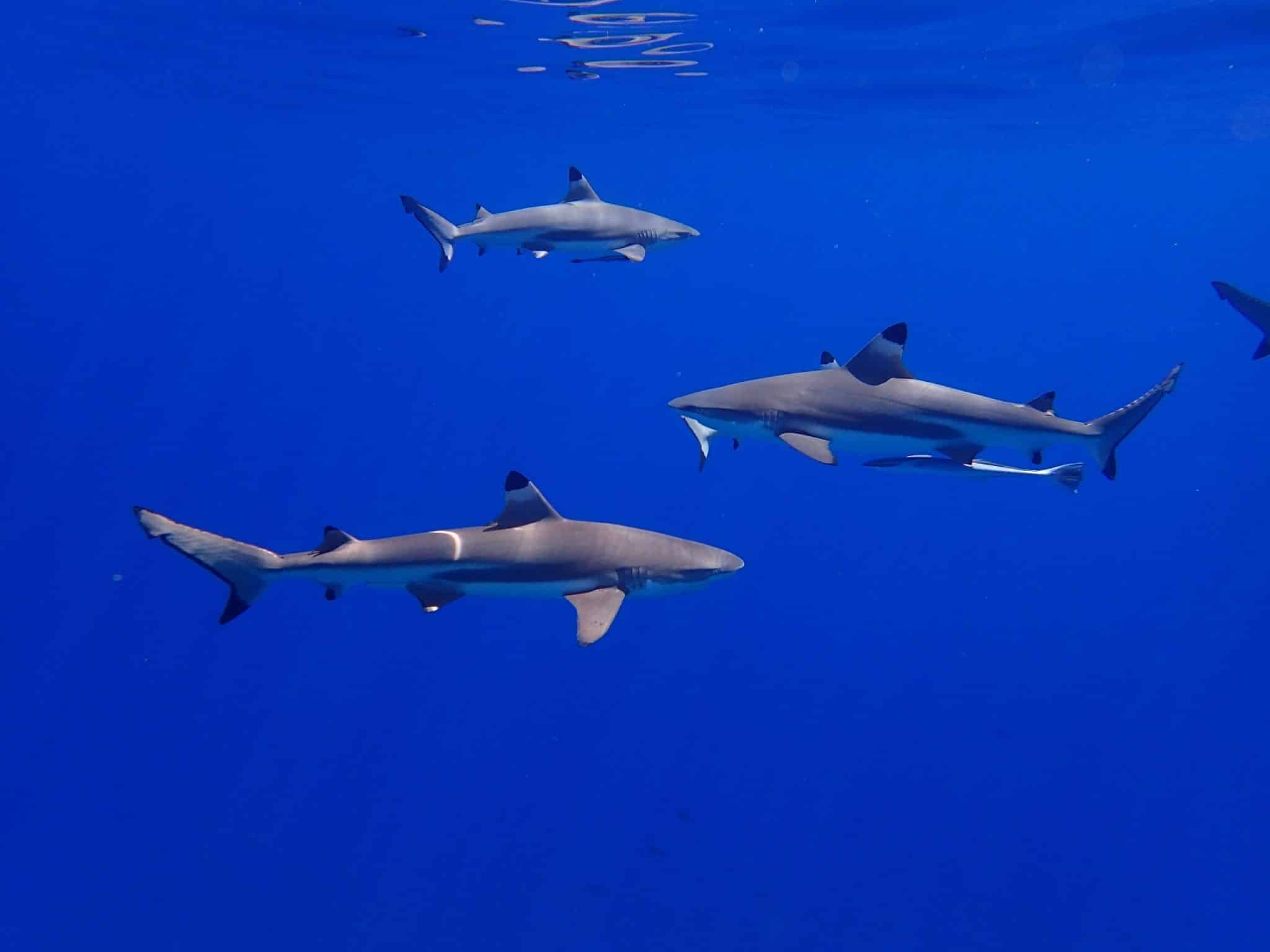
I've been to Egypt 2005 times since 20 to dive and snorkel. But over time I've only seen sharks in the Red Sea half a dozen times at most. Most recently in December 2022 - I encountered a whale shark. This was a really extremely rare encounter and for me it is one of the absolute shark lights of my diving career so far.
My goal is to hopefully see hammerhead sharks or longimani as soon as possible while diving in the Red Sea. A trip to Elphinestone is also planned for my next diving trip in December 2023. Longimanus, one of the most dangerous predatory fish in the Red Sea, is often encountered on this remote outer reef.
Danger of shark attack while swimming and snorkeling in the Red Sea?
I also have an opinion about swimming and snorkeling in the Red Sea. I can understand if people are afraid of shark attacks when they go bathing, swimming or snorkeling on the beaches of Hurghada, Makadi Bay, Soma Bay, Safaga, El Quseir and Marsa Alam. You have to look at this very analytically: in recent years there have been one to three shark attacks per year in Egypt. At the same time, millions of holidaymakers went into the water, went swimming, swimming or snorkeling.
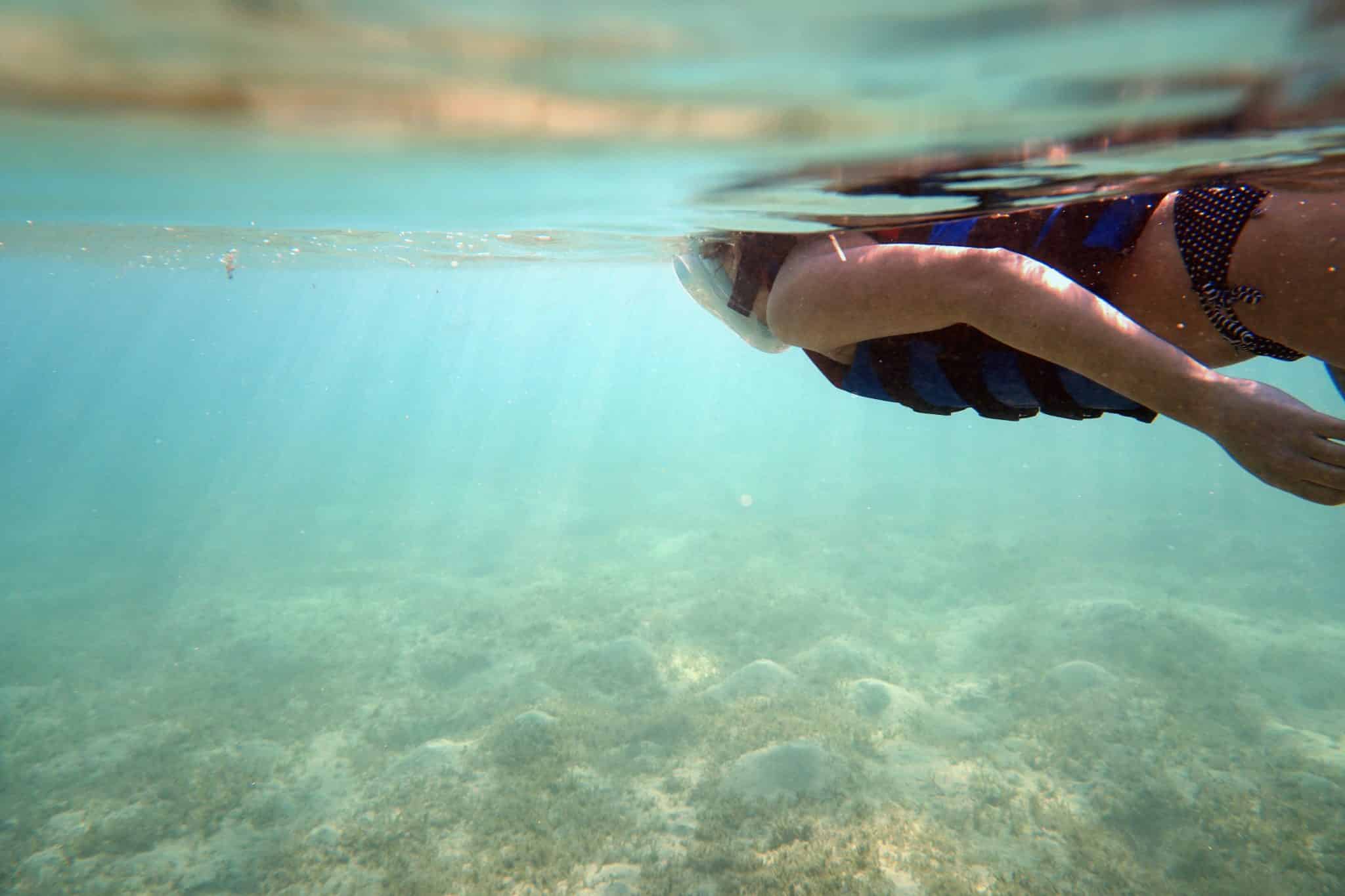
The fear of a shark attack in the Red Sea is comparatively irrational because you are more likely to win the lottery or be struck by lightning. On the other hand, if you look at the type of shark attacks in recent years, it must be clearly stated that the type of attacks has changed and the frequency is certainly increasing. So had about one Tiger shark eaten a swimmer – that is extremely unusual. Sharks usually only bite at most - this is called the infamous test bite - but they don't usually eat people.
If you are very afraid of a shark attack in the Red Sea
As a snorkeler or swimmer on the surface of the water you are definitely exposed. I don't feel particularly comfortable swimming in the Red Sea - completely different from diving - because I don't know what's underneath me. That's why I prefer diving to swimming or snorkeling. So let's be clear: If you don't feel comfortable swimming or snorkeling in the Red Sea, I have a few suggestions for you:
You can swim in the pool to calm down and, to be on the safe side, only go knee-deep into the water - so always stay close to the shore. If you want to snorkel, you should not go alone, but rather join a larger group. Sharks are shy and usually stay away from large groups of people. You can be pretty sure that all the sharks will run away if 20 snorkelers suddenly come along. Or learn to dive - then you can discover the underwater world and don't actually have to be afraid of sharks.

Follow me too Xing, TripAdvisor and Threads!
Follow me on Instagram now
stick with Travel Blog Just-Wanderlust.com and @strandkind_co always up to date and just follow me on Instagram!
Has anyone present already treated themselves to the new MacBook M3? And if so, what color? 💻🛒😍🤓
*Advertising / Ad*
#apple #macbook #macbookair #macbookairm3 #macbookair13

*Advertisement / Ad* The brand new MacBook Air M3 is here!
– With ultra-fast M3 processor 💨
– 18 hours of battery life 🔋
– Available in 13 and 15 inches 💻
– Only 1,24 kg light and 11,3 mm thin (13 inches)
– Ideal for working on the go and traveling 🧳😎🥰
– Perfect for photo & video editing and AI applications
– Open today apple.com/de or pre-order directly from tomorrow Apple Shop store 🛒
#apple #macbook #macbookair #macbookairm3 #macbookair13

*Advertisement / Ad* You don't know where to travel this summer yet? How about the paradisiacal Croatian island of Krk! Get advice from @sol.tours and @solvillas.eu, they know the best accommodations and most beautiful corners of the island 😍🤟🥰🐳🌍✈️🏄☀️⛵️😍🙏
*
*
*
* ->>>> also check the links in my bio 🤩
*
*
*
#strandkind #blogger #travelblogger #travel #travel
#travellust #travelmakeshappy #travelphotography
#travel fever #travelblog #microadventure #wanderlust
#adventure #nature #diewocheaufinstagram #urlaub
#vacation ready #holiday feeling #holiday at home
#holidaywithdog #holidaywithchildren
#travel #travelphotography #travelblogger
#traveltheworld #travelgram #traveling #croatia #visitkrk @visitkrkisland @visitmalinska

*Advertisement / Ad* You don't know where to travel this summer yet? How about the paradisiacal Croatian island of Krk! Get advice from @sol.tours and @solvillas.eu, they know the best accommodations and most beautiful corners of the island 😍🤟🥰🐳🌍✈️🏄☀️⛵️😍🙏
*
*
*
* ->>>> also check the links in my bio 🤩
*
*
*
#strandkind #blogger #travelblogger #travel #travel
#travellust #travelmakeshappy #travelphotography
#travel fever #travelblog #microadventure #wanderlust
#adventure #nature #diewocheaufinstagram #urlaub
#vacation ready #holiday feeling #holiday at home
#holidaywithdog #holidaywithchildren
#travel #travelphotography #travelblogger
#traveltheworld #travelgram #traveling #croatia #visitkrk @visitkrkisland @visitmalinska

*Advertisement / Ad* You don't know where to travel this summer yet? How about the paradisiacal Croatian island of Krk! Get advice from @sol.tours and @solvillas.eu, they know the best accommodations and most beautiful corners of the island 😍🤟🥰🐳🌍✈️🏄☀️⛵️😍🙏
*
*
*
* ->>>> also check the links in my bio 🤩
*
*
*
#strandkind #blogger #travelblogger #travel #travel
#travellust #travelmakeshappy #travelphotography
#travel fever #travelblog #microadventure #wanderlust
#adventure #nature #diewocheaufinstagram #urlaub
#vacation ready #holiday feeling #holiday at home
#holidaywithdog #holidaywithchildren
#travel #travelphotography #travelblogger
#traveltheworld #travelgram #traveling #croatia #visitkrk @visitkrkisland @visitmalinska

Never stop discovering - places, people, activities - and everything that lies within you⛷️🥰😍☀️🤟🥰🐳🌍✈️🏄☀️⛵️😍🙏
*
* Advertising
* Everything about the PillerseeTal in the link in the bio
*
*
*
*
#strandkind #blogger #travelblogger #shotoniphone #travel #travel
#travellust #travelmakeshappy #travelphotography
#travel fever #travelblog #microadventure #wanderlust
#adventure #nature #sealove #vacation
#readyforvacation #vacationfeeling
#holidaywithdog #holidaywithchildren #justwanderlust
#travel #travelphotography #travelblogger
#traveltheworld #travelgram #traveling

Over 40 different species of sharks in the Red Sea
Sharks are found in all seas around the world - they are an essential part of the Wildlife. More than 40 shark species are also native to the Red Sea. Most of them live far away Beach, When it comes to places where you can discover sharks with relative certainty, there are always three names that are all in Egypt: the Brother Islands, Daedalus Reef and Elphinstone are some of the best places in the northern Red Sea To discover sharks. There you can discover hammerhead sharks and white tip sharks, who regularly stay at these reefs.
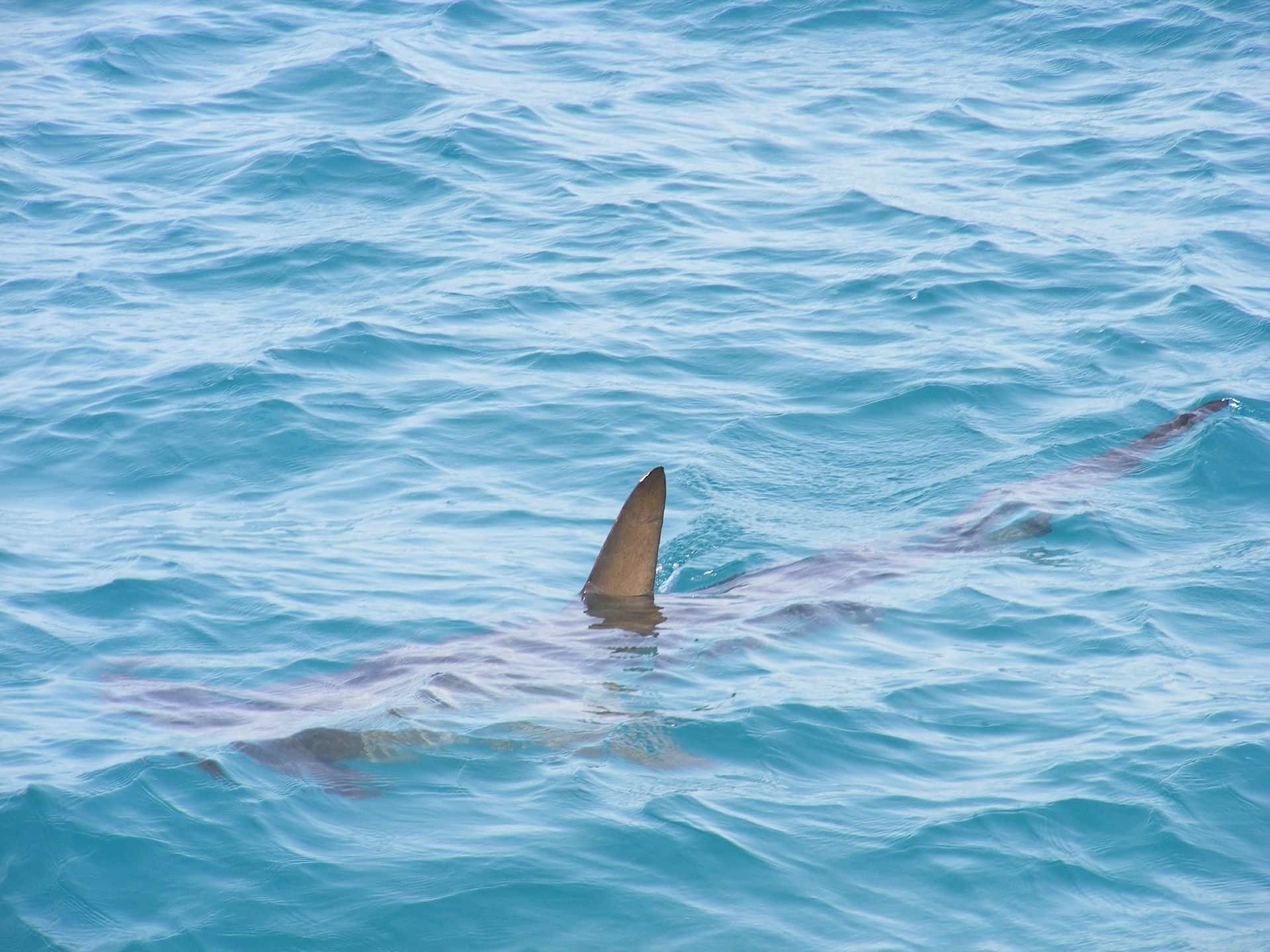
South of Sudan there are many more spots where sharks are native. Swimmers need not worry about the predators. Among the most common sharks in the Red Sea are the Longimanus, various small reef sharks, the whale shark and hammerhead sharks.
1. Oceanic Whitetip Shark (Longimanus) – Icon of the Red Sea
The oceanic whitetip shark, also known as Longimanus, is one of the most fascinating sharks in the Red Sea. It is a gray shark and lives in the Red Sea on remote reefs such as the Elphinstone Reef. It gets its name from the white tip on its dorsal fin. The animal is very popular with divers and can be seen on remote reefs far out in the Red Sea. In addition to the popular Elphinstone Reef, Longimanus also appears at the world-famous Daedalus Reef and the Brother Islands.
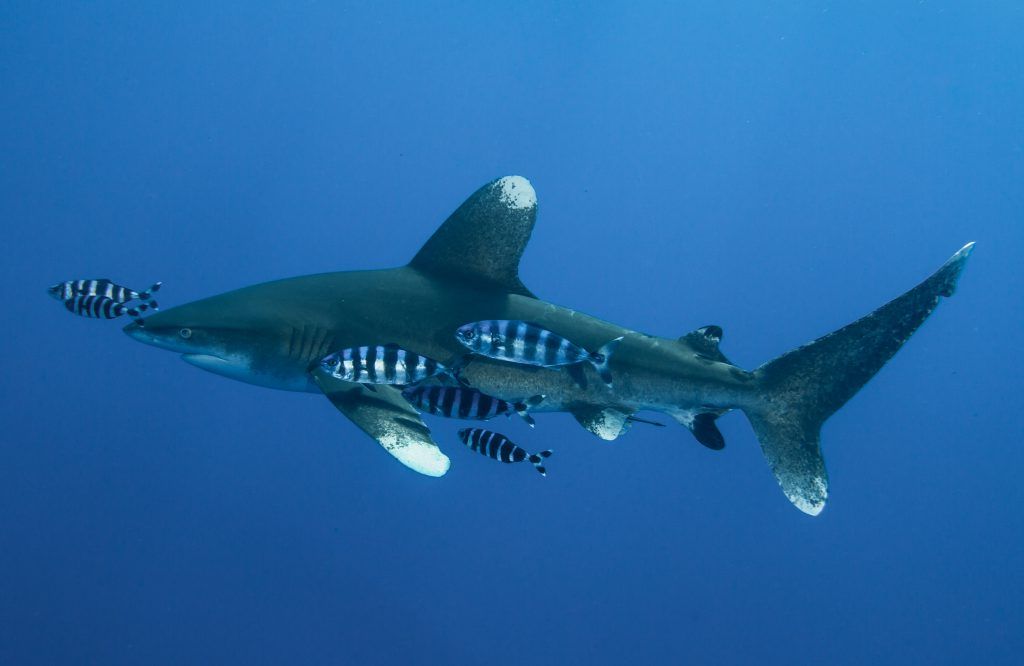
The oceanic whitetip shark is notorious because it shows little shyness, swims very curiously towards divers and may even touch them. However, the predator can also do something different: all six serious and sometimes fatal shark attacks between 2007 and 2010 were attributed to the oceanic whitetip shark.
Swimmers were affected every time - presumably because the hunting shark noticed the fidgeting movements of its prey - sea turtles - mistaken. In 2018 there was also an attack on a careless diver at Elphinstone, whose leg was bitten by a shark. The diver survived and is alive and well again. The video still shocked me when I saw it.
2. Whitetip reef shark – relaxed inhabitant of the reef
The whitetip reef shark is significantly smaller and narrower than the Longimanus. As the name suggests, it inhabits shallow and land-based waters between eight and 40 meters deep. Unlike pelagic species that must constantly swim to survive, whitetip reef sharks sleep in caves during the day and hunt at night.
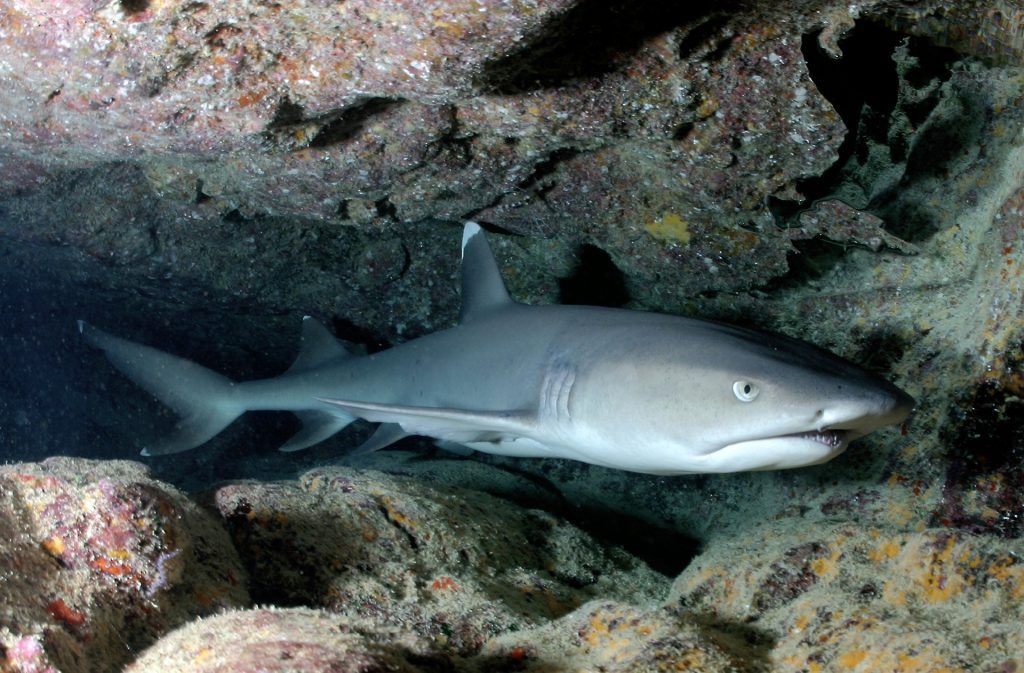
With a bit of luck, the small shark can be found on many coral reefs in the Red Sea. You also have very good chances of finding the reef inhabitants on the Brother Islands.
3. Hammerhead sharks – the shooting stars in the Red Sea
Hammerhead sharks are among the absolute shooting stars in the Red Sea and are very popular with divers. They get their name because of the shape of their face, which in the broadest sense is reminiscent of a hammer. However, as a snorkeler or swimmer you will hardly spot one. The animals are only found on remote reefs.
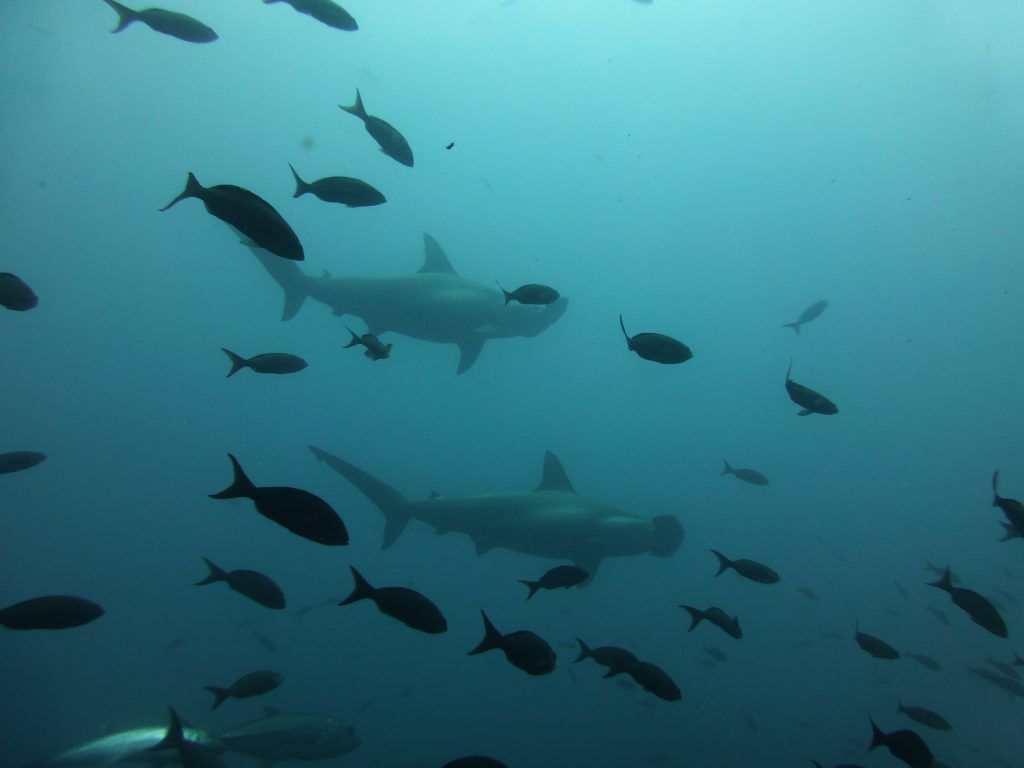
To discover any of them, you have to search carefully! The strange-looking predatory fish can be found, for example, on the Daedalus Reef, the Brother Islands and Elphinstone. There are strong currents there that provide optimal conditions for hammerhead sharks.
4. Gray Reef Shark – the average shark
From the point of view of the biologically inexperienced diver, the size of the gray reef shark is between the whitetip reef shark and the oceanic whitetip shark. The approximately 2,5 meter long shark also inhabits the outer reefs in the Red Sea.
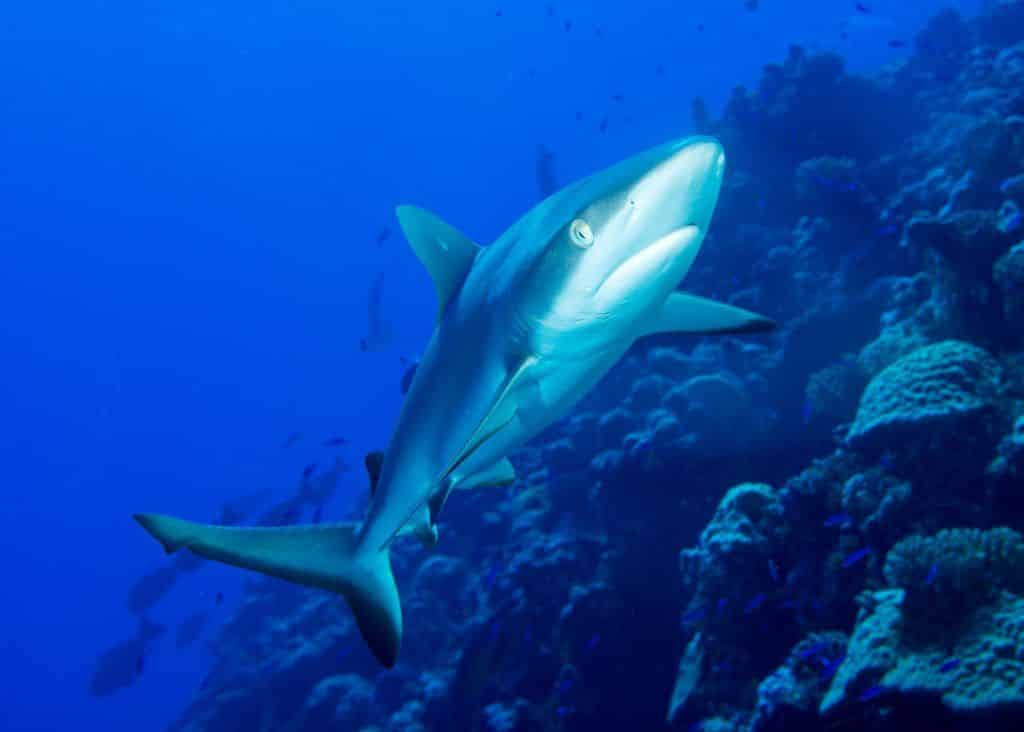
It can also be as curious as the Longimanus and can get up close and personal with divers. In the Red Sea, gray reef sharks do best on the Brother Islands and Elphinstone.
5. Whale sharks – the largest fish in the world in the Red Sea
Diving schools in Egypt agree that more and more whale Sharks be spotted in the Red Sea. The world's largest fish follows its food - and that seems to be driving it more and more off the coast of Egypt. However, you have to be very lucky to see the peaceful giant. Unfortunately, I've only been lucky enough to see a group of whale sharks from the diving boat. That was one of the most incredible moments of my diving life so far. How impressive does it have to be to spot a whale shark underwater?
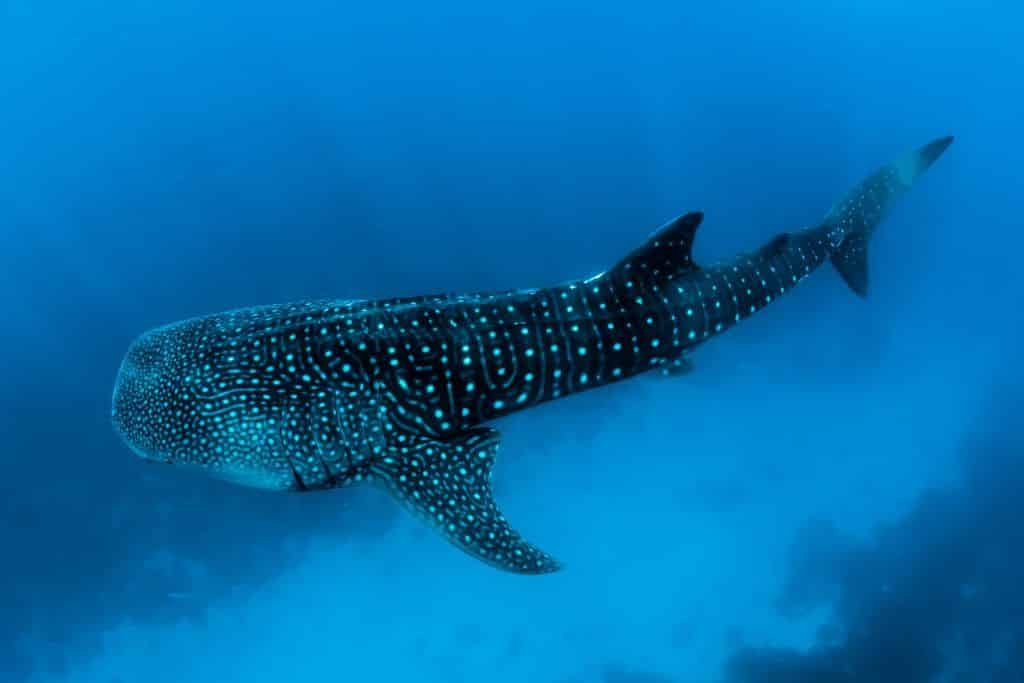
The giant shark has no specific spot where it can be spotted - it can appear virtually anywhere and nowhere. As a snorkeler you can also be lucky and find a whale shark right on the house reef. For example, there are reports that the whale shark often appears in El Quadim Bay in El Quseir.
6. Mako sharks – fast, agile hunters
Mako sharks are not to be trifled with. We ourselves witnessed a fatal accident between a beach vacationer and a mako shark (see last chapter). The predatory fish from the mackerel shark genus are very fast and agile hunters that sprint through the water at up to 80 km/h.
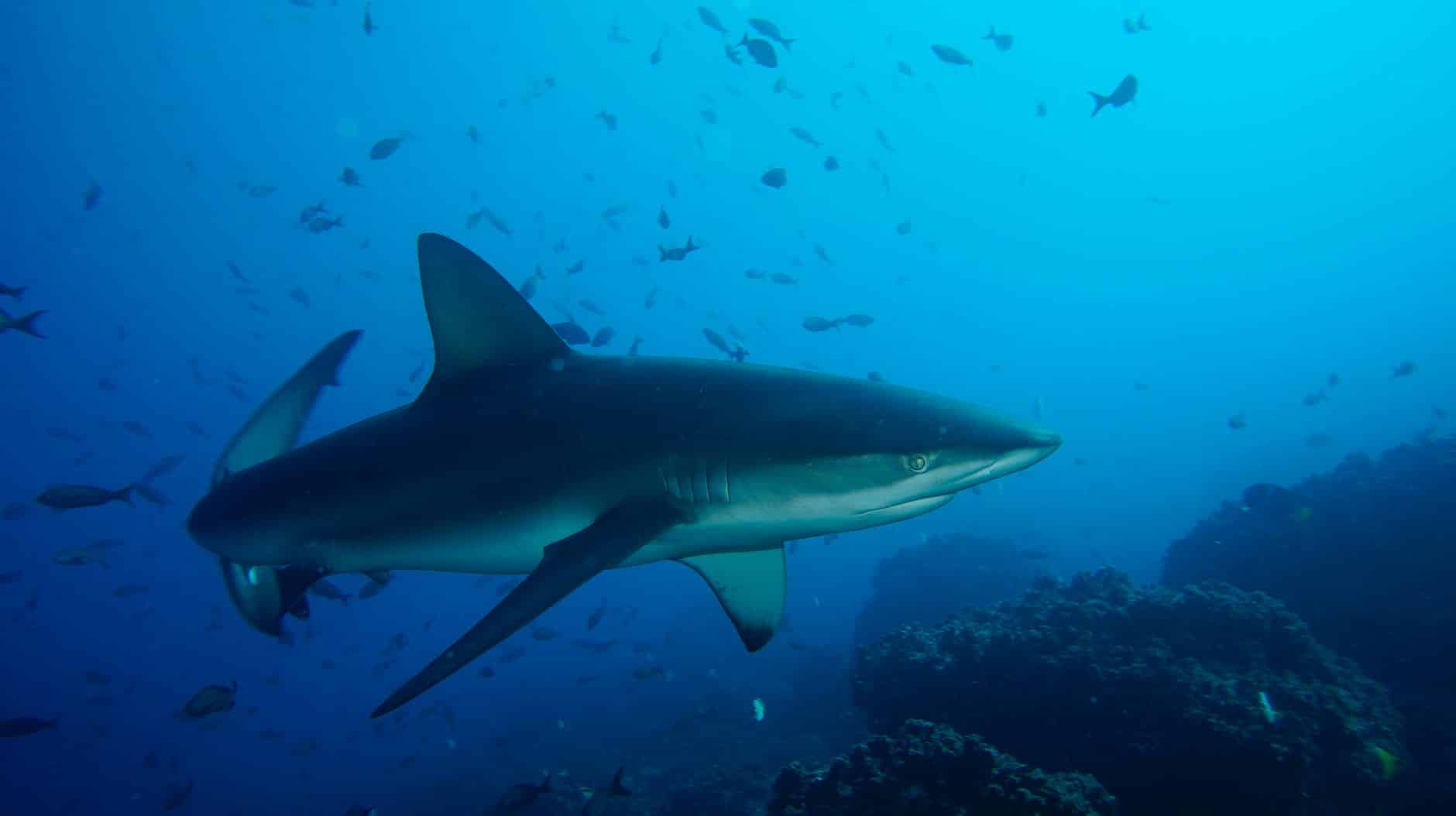
Accordingly, the shark's body shape is very streamlined. Like the other shark species, the sharks are most likely to be found on the well-known shark reefs off the Egyptian coast, but significantly less often than the other species.
7. Tiger sharks off Hurghada – spectacular encounters
Tiger sharks are gorgeous, big sharks, which can grow significantly larger than the previously mentioned shark species. They get their name because of the dotted back. The large predatory fish are considered a rather dangerous shark species that swimmers and divers should at least be careful of.
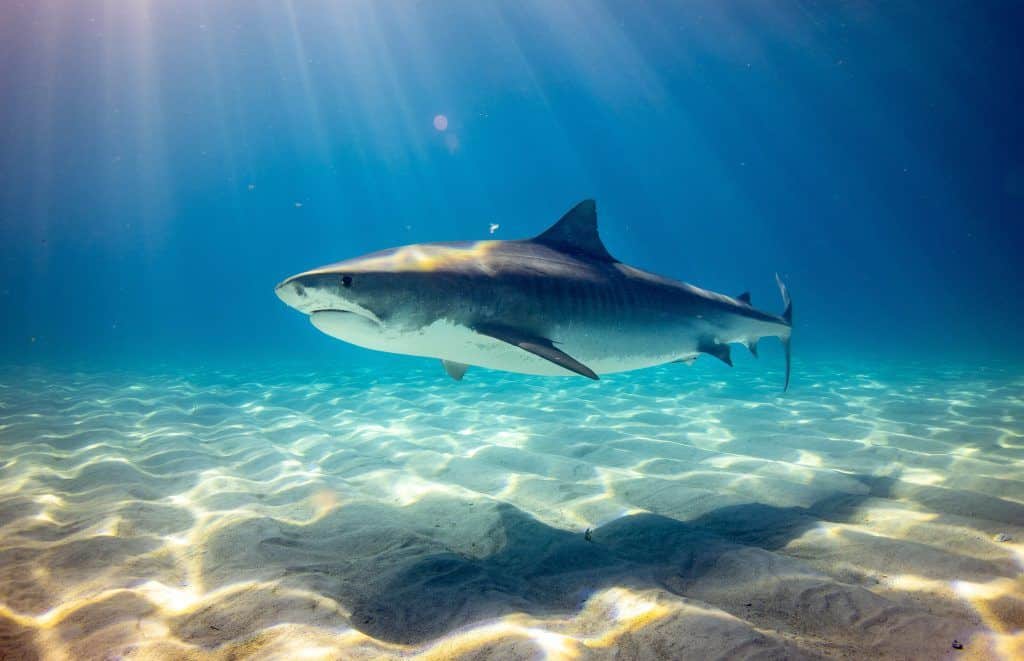
And yes, although extremely rare, tiger sharks are also found in the Red Sea. A spectacular video from the James & Mac diving center shows a stately tiger shark on Carless Reef near Hurghada.
Video – Tiger shark filmed near Hurghada on Carless Reef
8. Other species – bull sharks, thresher sharks, silky sharks
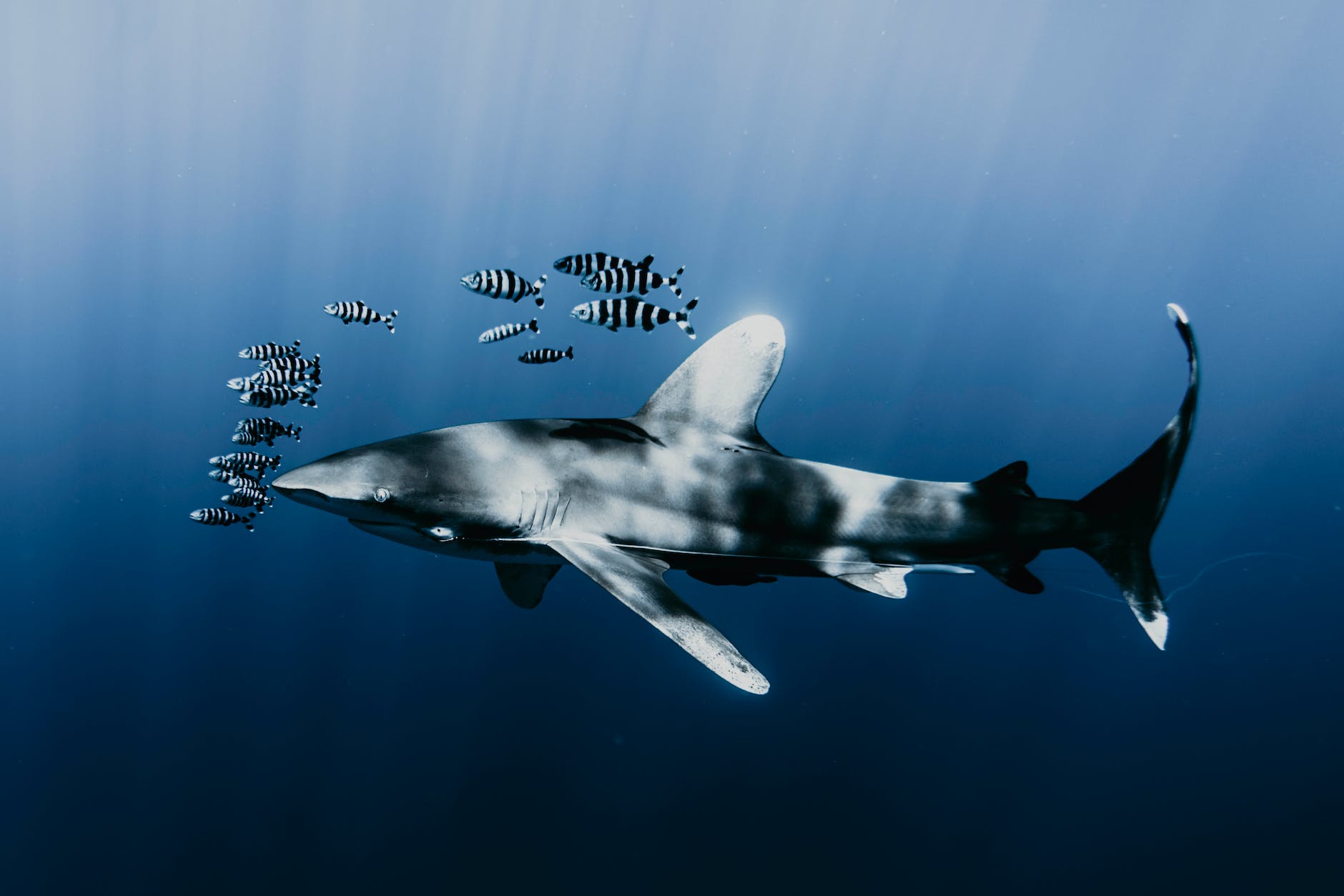
Three more rare species that you can find on the Red Sea reefs are bull sharks, fox sharks and silk sharks. Especially the bull sharks have it all. They are similar to the tiger sharks to the more dangerous species of sharks and should be considered at least with great respect and distance.
Buy books about sharks
- schoolbooks
- Age recommendation: from 8 years
- school supplies
Sharks in the Red Sea - rules of conduct
Basically, as a swimmer, snorkeler and diver you should behave respectfully towards all marine animals. Sharks are not bloodthirsty monsters that want to devour you. On the contrary, they are sensitive and sensitive creatures that have a certain curiosity and are usually quite shy. Most sharks in the Red Sea take flight when they see a snorkeler or diver. However, for whatever reason, it can happen that a shark reacts aggressively towards you.
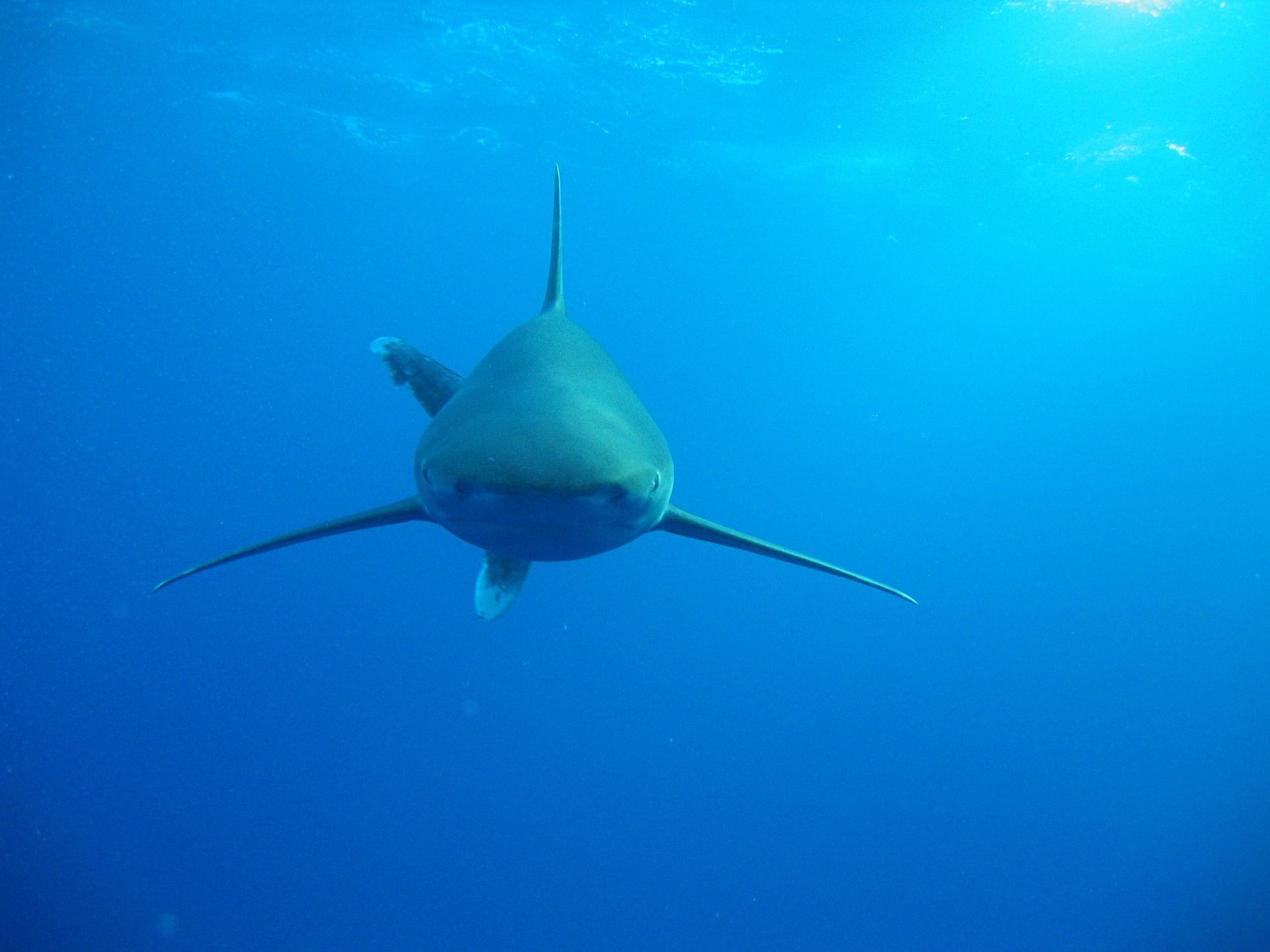
Then you should react accordingly: “If a shark approaches, never swim away frantically. Bring your body vertically and paddle with just your feet. This means you can drastically reduce your noise,” explains shark researcher Dr. Erich Ritter compared to that News magazine T-Online.de. In the extremely unlikely event that they are actually attacked by a shark, Ritter advises those affected to literally hit the predatory fish firmly on the snout.
You should move towards the animal, sharks are not used to that. If the shark attacks repeatedly, a bold blow to the gills can even kill the predatory fish. In case of doubt, however, it is sufficient to apply a little water pressure to the gills using appropriate hand movements to make the shark flee.
The rules of conduct for dealing with sharks in the Red Sea
Let me reiterate here - the chances of you encountering a shark while swimming or snorkeling on the beach in front of your hotel are so tiny that you are more likely to win the lottery or be struck by lightning. But if, contrary to expectations, it still happens, you can follow the following tips and rules of conduct to scare the shark away.
1. Keep calm
Should a shark approach, it is crucial to remain calm. Hectic movements or a quick attempt to escape can make the shark curious or even provoke it. It is better to make calm and controlled movements so as not to attract attention. I know it's difficult in situations like this. But it is the best way.
2. Vertical position
In the event of a shark encounter, it is advisable to place the body in a vertical position. This unusual silhouette could confuse the shark, giving it time to assess the situation and plan further action. Sharks' natural prey tends to be creatures with a horizontal stature.
3. Quiet locomotion
I would like to see this in practice, how a snorkeler paddles his feet to escape from a shark. But basically the idea is correct: instead of paddling with your arms and legs, you should only paddle with your feet. This minimizes the noise in the water that could attract the shark. Sharks have very sensitive hearing and can detect sounds and vibrations in the water over long distances.
4. Self-defense
In the extremely unlikely event that a shark attacks, experts recommend hitting it hard on the snout. Yes, that's right, you can then just punch the shark in the mouth - in the truest sense of the word. Or on the gills. These regions are very sensitive and a strong blow could temporarily disorient the shark and allow it to escape.
5. Additional defensive measures
If the shark doesn't let up after the first defensive attempt, a bold blow to the gills could be an effective defense. The gills are another sensitive region of the shark. In an absolute emergency, applying pressure to the gills through hand movements or a strong blow could further irritate the shark and allow it to escape. A well-aimed blow can even kill the shark.
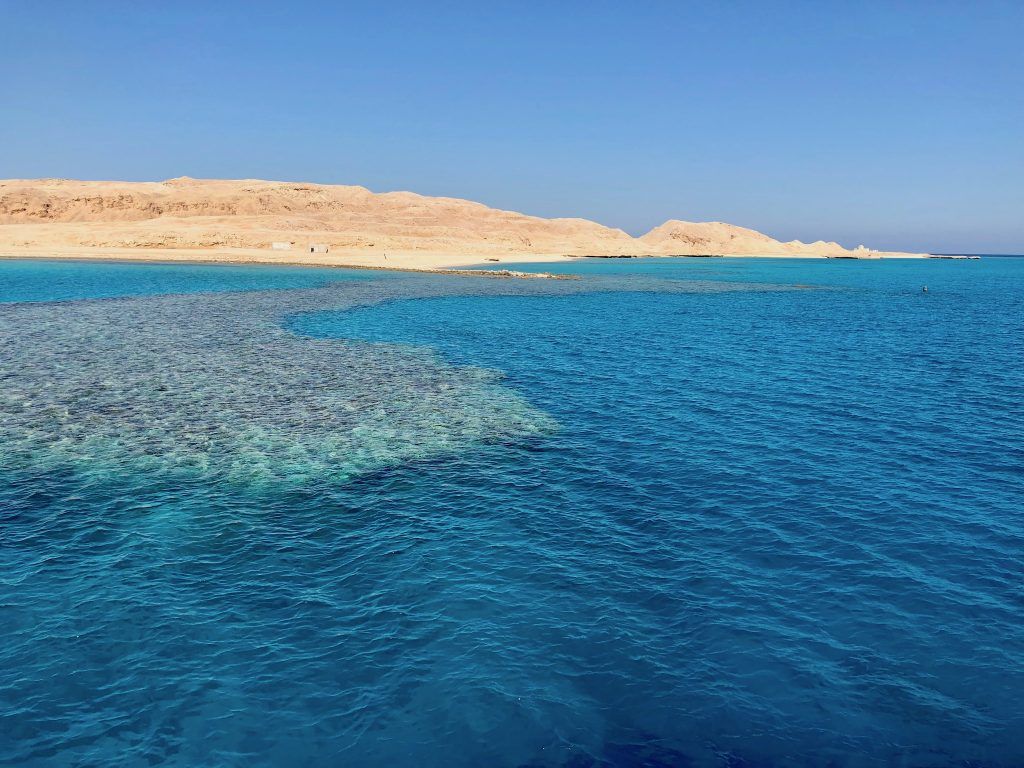
FAQs Sharks in the Red Sea - the most important questions and answers
I have put together for you the most important questions and answers about sharks in the Red Sea, sharks in Egypt, sharks in Hurghada and generally in the waters off the popular holiday resorts.
What sharks are there in Hurghada?
Hurghada is the largest and most important resort on Egypt's west coast on the Red Sea. A number of holidaymakers from Europe go on holiday in the city or in the surrounding area every year. Many people ask themselves: Which sharks are there in Hurghada? There are over 40 different species of sharks in the waters off Hurghada, but holidaymakers will rarely encounter them directly near the beach. Below are:
– Oceanic Whitetip Shark (Longimanus): Icon of the Red Sea
– Whitetip Reef Shark: laid-back resident of the reef
– Hammerhead sharks: the shooting stars in the Red Sea
– Gray reef shark: the average shark
– Whale Sharks: The largest fish in the world in the Red Sea
- Mako Sharks: fast, agile hunters
– Tiger sharks: spectacular encounters possible
– Bull sharks: the scary ones
– Thresher sharks: the graceful ones
– Silky sharks: the pretty ones
The most likely encounters while snorkeling in Hurghada are reef sharks such as the gray reef shark, white tip reef shark and black tip reef shark. If you want to see other sharks in Hurghada, you will probably have to take a dive boat to the outer reefs: Longimanus, hammerheads, bull sharks and tiger sharks can also be found there with a bit of luck. It is more than unlikely that you will find sharks directly on the beach when bathing in the Red Sea with Hurghada - but of course it can never be completely ruled out.
You can find all information about sharks in the Red Sea and accidents with predatory fish in our article.
What kind of sharks are there in the Red Sea?
There are many different shark species in the Red Sea - there are over 40 different shark species in total. The main types include:
– Oceanic Whitetip Shark (Longimanus): Icon of the Red Sea
– Whitetip Reef Shark: laid-back resident of the reef
– Hammerhead sharks: the shooting stars in the Red Sea
– Gray reef shark: the average shark
– Whale Sharks: The largest fish in the world in the Red Sea
- Mako Sharks: fast, agile hunters
– Tiger sharks: spectacular encounters possible
– Bull sharks: the scary ones
– Thresher sharks: the graceful ones
– Silky sharks: the pretty ones
Are the sharks in the Red Sea dangerous?
In general, sharks are not dangerous to humans. However, misunderstandings can arise. And when sharks in the Red Sea become dangerous to humans and a shark accident occurs, it is often due to human error. The shark species in the Red Sea that can be more dangerous include:
1. The Mako Shark: a fast hunter that has been responsible for fatal shark accidents in the Red Sea, attacking swimmers and snorkelers.
2. The oceanic whitetip shark (Longimanus): He is considered to be particularly curious and is not very shy of people. However, he lives far out there, so that only divers on liveaboards get to see him. Longimani have meanwhile attacked divers off the Brother Islands – unusual behavior.
Human intervention is considered to be the cause of shark attacks and dangerous sharks in the Red Sea – for example, when people dump large amounts of food into the sea from ships or from land, this attracts the animals. In addition, overfishing deprives the sharks of their livelihood.
Are there sharks in Hurghada?
Yes, Hurghada has a number of shark species that are almost never seen on the beach. With a bit of luck you can watch them diving and snorkeling on the offshore coral reefs. In total there are up to 44 different shark species around Hurghada. The most important types include:
– Oceanic Whitetip Shark (Longimanus): Icon of the Red Sea
– Whitetip Reef Shark: laid-back resident of the reef
– Hammerhead sharks: the shooting stars in the Red Sea
– Gray reef shark: the average shark
– Whale Sharks: The largest fish in the world in the Red Sea
- Mako Sharks: fast, agile hunters
– Tiger sharks: spectacular encounters possible
– Bull sharks: the scary ones
– Thresher sharks: the graceful ones
– Silky sharks: the pretty ones
Which Hotel Shark Attack Hurghada?
Shark attacks have occurred in Sahl Hasheesh, Coraya Bay and the Marsa Alam region, among others. In principle, however, it does not matter which hotel in Hurghada shark attacks took place at, since the animals are highly mobile - and every shark attack that has happened in Egypt so far took place in a different region and was perpetrated by a different animal.
How often shark attacks Egypt?
In Egypt, there is a maximum of one or two shark attacks per year. Sometimes there isn't a single shark attack in Egypt in a whole year. However, shark attacks have tended to increase worldwide in recent years. Experts assume that humans are to blame - for example, when people dump large amounts of food into the sea from ships or from land, this attracts the animals. In addition, overfishing deprives the sharks of their livelihood.
Is it dangerous to swim in the Red Sea?
The probability of being attacked by a shark while swimming in the Red Sea is lower than being struck by lightning in Central Europe. Nevertheless it is possible. When swimming in the Red Sea, the almost invisible stonefish and triggerfish, some of which also live on the house reefs of the hotels, are dangerous. I would recommend wearing a wetsuit when snorkeling and swimming in the Red Sea.
What dangerous animals live in the Red Sea?
Comparatively few dangerous animals live in the Red Sea. Above all, smaller fish are more dangerous than large sharks. The most dangerous animals in the Red Sea include:
1. The Stonefish: The stonefish sits atop rocks and reefs and is nearly invisible. Its poison in the skin can cause severe paralysis in humans when touched, which can then lead to a person drowning.
2. The triggerfish: This fish defends its territory and pursues invaders. If you swim into his territory, he may attack you with his sharp beak and bite you hard. He can inflict really serious injuries on people through the bites.
3. The Lionfish: The pretty fish live on the reef. Once they notice you, they may follow you. As a swimmer, you don't see when they're chasing you. The sting causes severe pain and cramps, but is not fatal.
4. The Mako Shark: a fast hunter that has been responsible for fatal shark accidents in the Red Sea, attacking swimmers and snorkelers.
5. The oceanic whitetip shark (Longimanus): He is considered to be particularly curious and is not very shy of people. However, he lives far out there, so that only divers on liveaboards get to see him. Longimani have meanwhile attacked divers off the Brother Islands – unusual behavior.
Does Egypt have sharks?
Yes, there are numerous sharks in the Red Sea in Egypt. There are a number of shark species that are almost never seen on the beach, but rather live out in the sea. With a bit of luck you can watch them diving and snorkeling on the offshore coral reefs. In total there are up to 44 different shark species around Hurghada. The most important types include:
– Oceanic Whitetip Shark (Longimanus): Icon of the Red Sea
– Whitetip Reef Shark: laid-back resident of the reef
– Hammerhead sharks: the shooting stars in the Red Sea
– Gray reef shark: the average shark
– Whale Sharks: The largest fish in the world in the Red Sea
- Mako Sharks: fast, agile hunters
– Tiger sharks: spectacular encounters possible
– Bull sharks: the scary ones
– Thresher sharks: the graceful ones
– Silky sharks: the pretty ones
How many sharks are in Hurghada?
There are over 40 different species of sharks in Hurghada. However, very few are seen on the beach. Seeing sharks on the beach in Hurghada is next to impossible. You'd have to take a diving trip to remote reefs to see sharks in Hurghada.
How many shark attacks in Hurghada?
In Hurghada itself there has not been a shark attack for many years. Over the past 20 years there have been shark attacks in the Red Sea at Sahl Hasheesh near Hurghada, as well as multiple attacks at Marsa Alam and Sharm El Sheikh. There have been a total of 1828 shark attacks in Egypt since records began in 22.
How close to the beach can sharks get?
From my own experience I know that sharks can come very close to the beach. Baby sharks even swim in ankle-deep water. I saw an adult gray reef shark swimming in knee deep water on a very remote beach.
Where was the shark attack in Egypt?
Over the past 20 years there have been shark attacks in the Red Sea at Sahl Hasheesh near Hurghada, as well as multiple attacks at Marsa Alam and Sharm El Sheikh. There have been a total of 1828 shark attacks in Egypt since records began in 22.
Related Articles
Sharks are found in all seas around the world - and are largely harmless to humans
My conclusion
Sharks are not monsters - they are fascinating creatures. The sharks in the Red Sea in Egypt are extremely rare animals that deserve protection. As a swimmer and snorkeler, if you go into the water at your hotel beach, you will most likely never see sharks in Egypt. You can usually go into the water without hesitation. Especially if there are a lot of people in the water right around you. Sharks are shy and avoid people. Nevertheless, shark attacks continue to occur in Egypt. These are often caused by human actions - for example because people have thrown leftover food into the water.
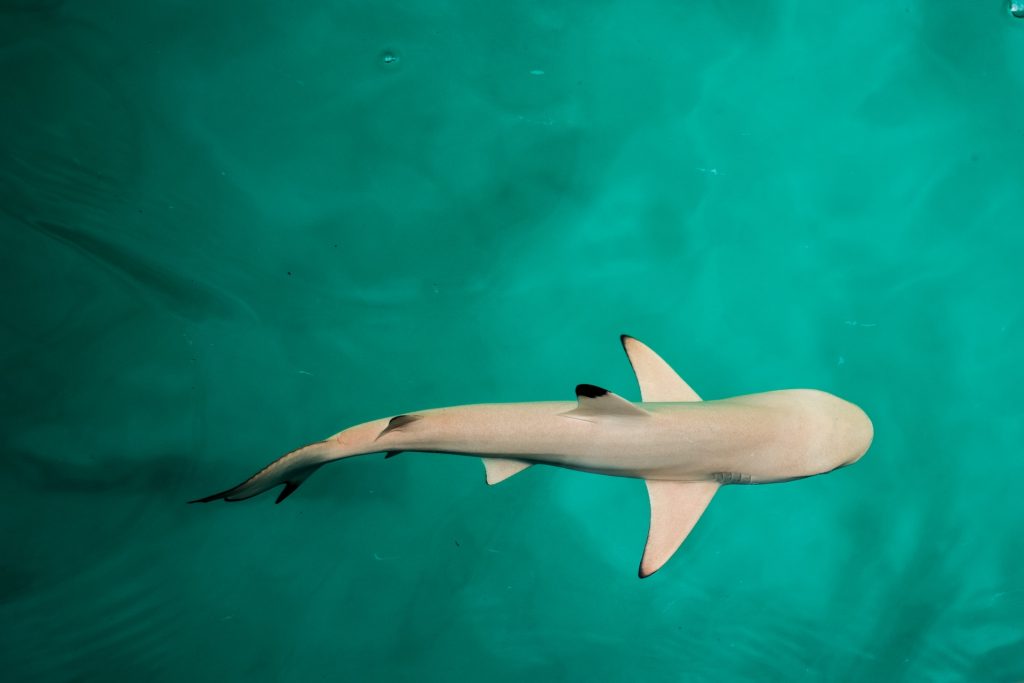
If you really want to see sharks in Egypt or even dive with them, you either have to be really lucky on the reef - for example to see a reef shark lying in a small cave somewhere. Or you need to be an advanced diver and take a trip to Elphinstone near Marsa Alam, Daedalus Reef or the Brother Islands. There you will meet the large, pelagic shark species such as the whitetip reef shark, the so-called Longimanus, and the great hammerhead shark.
My conclusion is therefore clear: If you are on vacation in Egypt, you really don't need to be afraid of sharks and shark attacks. On the contrary: if you go diving, you will probably consider yourself lucky to even see a shark. Sharks are fascinating creatures worthy of protection and deserve our protection.
Have you ever seen sharks in the Red Sea in Egypt? Or are you worried about encountering them while swimming and snorkeling on vacation? Share your experiences in the comments!
*Affiliate links (advertising) & Amazon advertisements with affiliate links / sales by Amazon or third-party providers on the Amazon marketplace. / As an Amazon partner, we receive a small commission - you don't pay anything extra. / Product data last updated on November 25.04.2024, XNUMX / Images from the Amazon Product Advertising API / Product images are served via a privacy proxy / Disclaimer: The price shown may have increased since the last update. The actual price of the product as stated on the seller's website on Amazon.de at the time of purchase is decisive for the sale. A real-time update of the prices stated above is not technically possible.


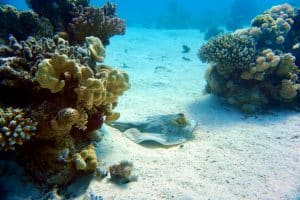
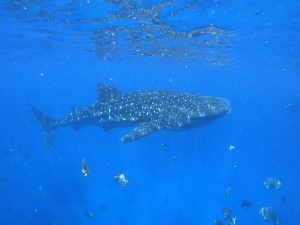
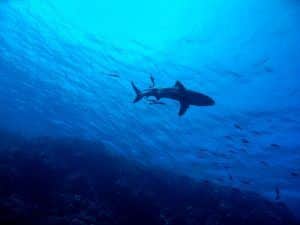

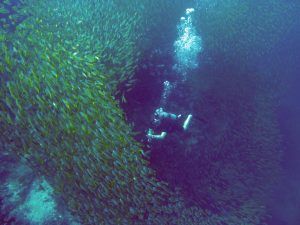
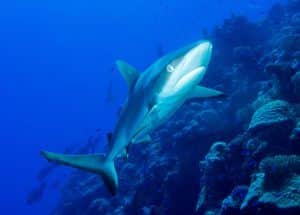
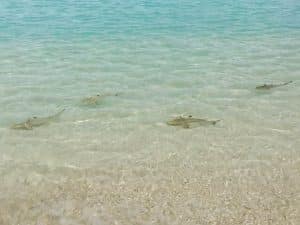
In December 1999 in Hurghada I had my first and so far only encounter with a shark (white tip reef shark). I will never forget this fascinating moment. I hope this year in Marsa Alam for a repeat.